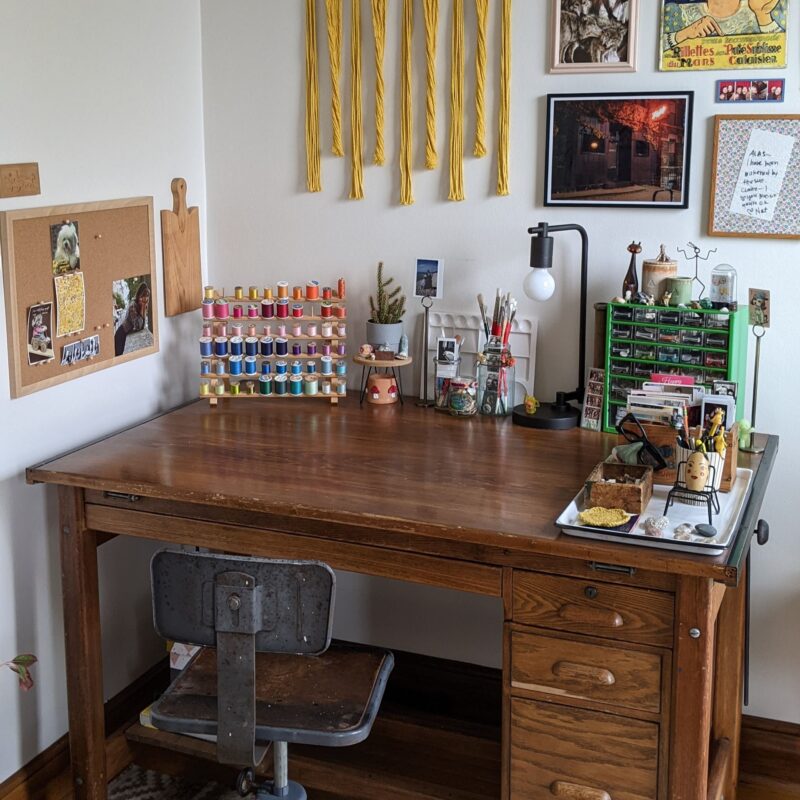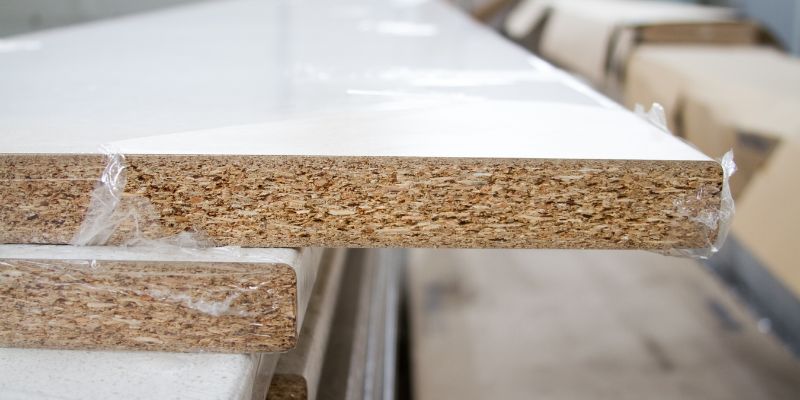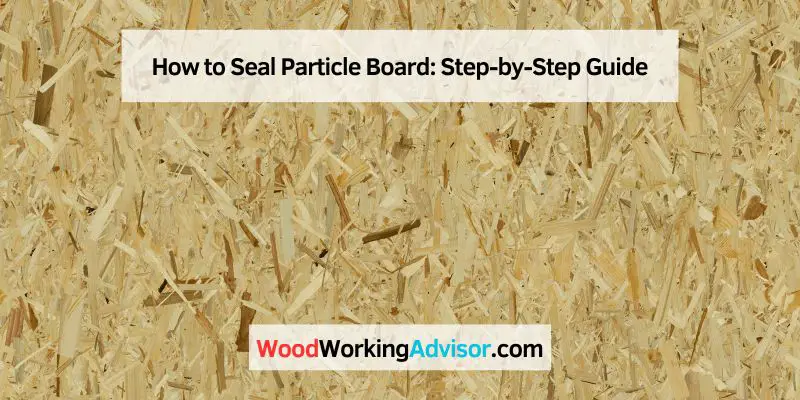To seal particle board, apply a layer of wood sealant using a brush or roller, ensuring full coverage. This will protect the board from moisture and damage, extending its lifespan.
Properly sealing particle boards is crucial for preventing swelling, warping, and degradation over time. It also provides a smooth and durable surface for painting or other finishing options. Whether you’re working on kitchen cabinets, shelves, or furniture, sealing particle board is an essential step in preserving its quality and appearance.
By following these steps, you can effectively seal the particle board and enhance its longevity.
Choosing The Right Sealer
Aiming to protect your particle board from moisture damage, choosing the right sealer is crucial. By considering the type of particle board and assessing the environmental exposure, you can ensure long-lasting protection for your furniture or project.
Consider The Type Of Particle Board
When deciding on a sealer for your particle board, it’s important to consider the type of particle board you are working with. The two common types are low-density particle board (LDPB) and medium-density particle board (MDPB). LDPB is less dense and more prone to moisture damage, while MDPB is more durable.
If you are working with LDPB, it is recommended to use a sealer with better moisture resistance to provide extra protection. On the other hand, MDPB may require a less moisture-resistant sealer due to its inherent durability.
Assess The Environmental Exposure
The next important factor to consider when choosing a sealer for your particle board is environmental exposure. Environmental factors such as humidity levels, temperature fluctuations, and proximity to water sources can impact the moisture levels to which your particle board is exposed.
If your particle board furniture or project will be placed in a high-humidity environment, such as a bathroom or kitchen, it is crucial to select a sealer that offers excellent moisture resistance. Look for sealers specifically formulated for high-humidity environments to ensure optimal protection.
On the other hand, if your particle board will be used in a low-humidity environment, such as a living room or bedroom, a sealer with moderate moisture resistance may be sufficient.
Additionally, consider the proximity to water sources. If your particle board will be exposed to water splashes or spills, it is essential to choose a sealer that provides waterproofing properties. This will prevent any water infiltration that could lead to warping, swelling, or other types of moisture damage.
In summary, when choosing the right sealer for your particle board, it is important to consider the specific type of particle board and assess the environmental exposure. By matching the sealer’s moisture resistance to the needs of your particle board, you can ensure enhanced protection against moisture damage, prolonging the lifespan of your furniture or project.

Credit: fastframe.com
Preparing The Particle Board
To seal the particle board, start by sanding the surface lightly to remove any imperfections. Then, apply a coat of primer to the board and let it dry completely. Once the primer is dry, sand the surface again before applying a top coat of sealant or paint to protect the particle board from moisture and damage.
Surface Cleaning
Before you can seal particle board, it is essential to ensure the surface is clean and free from any dust, dirt, or debris. Cleaning the particle board properly not only helps the sealant adhere better but also improves the overall finish and longevity of the seal. Here are a few simple steps to clean the particle board effectively:
- Start by wiping the surface with a damp cloth to remove loose dirt and dust.
- For stubborn stains or grease marks, use a mild detergent or a vinegar solution. Apply it to the stained area and gently scrub with a soft brush or sponge.
- Rinse the surface thoroughly with clean water to remove any residue from the cleaning solution.
- Allow the particle board to dry completely before proceeding to the next step.
Sanding The Surface
Sanding the particle board is an important step to create a smooth and even surface for sealing. It helps in removing any imperfections, rough edges, or previous coatings that may hinder the adhesion of the sealant. Follow these steps for sanding the particle board:
- Start by selecting the right sandpaper grit. For initial sanding, use a coarse grit (around 80-100). Then, switch to a finer grit (around 120-150) for a smoother finish.
- Attach the sandpaper to a sanding block or an electric sander to ensure consistent pressure and even sanding.
- Using smooth and even strokes, sand the surface of the particle board in the direction of the grain. Avoid applying too much pressure, as it may damage the board.
- Remove the sanding dust from the surface using a vacuum cleaner or a brush. Wipe the surface with a damp cloth to remove any remaining dust particles.
Remember, proper surface cleaning and sanding are crucial for achieving excellent results when sealing particle boards. Now that you have successfully prepared the particle board, it’s time to move on to the next step – applying the sealant.
Applying The Sealer
Applying the sealer is a crucial step in sealing a particle board to protect it from moisture and damage. It requires attention to detail and the use of the appropriate application method to ensure an even and effective seal.
Selecting The Appropriate Application Method
When selecting the appropriate application method for sealing particle board, consider factors such as the type of sealer being used, the size of the project, and the desired finish. Common application methods include brush application, spray application, and roller application.
Even the Application Of The Sealer
Ensuring an even application of the sealer is essential for a consistent and protective seal. Begin by applying the sealer in smooth, overlapping strokes to avoid leaving streaks or patches. Work methodically to cover the entire surface, taking care to avoid applying too much sealer in one area, which can result in uneven absorption and an inconsistent finish.
Drying And Curing
To seal particle board, begin by thoroughly sanding the surface and removing any dust. Next, apply a coat of primer and let it dry completely. Once dry, use a paint or sealant of your choice and apply multiple thin coats, allowing each to dry before adding the next.
This will ensure a durable seal and protect the particle board from moisture and damage.
Allowing Sufficient Drying Time
When it comes to sealing particle board, allowing sufficient drying time is crucial for achieving a durable finish. This step ensures that the sealant fully adheres to the surface and forms a protective barrier.
To start, prepare the particle board by cleaning it thoroughly to remove any dust or debris. Once the surface is clean and dry, apply the sealant evenly using a brush or roller. Allow the initial coat to dry completely before proceeding with additional coats, if necessary.
Keep in mind that the drying time can vary depending on the type of sealant used and the environmental conditions. In general, it is recommended to wait at least 24 hours for the initial coat to dry. Check the manufacturer’s instructions for specific recommendations.
During the drying process, it is important to keep the particle board in a well-ventilated area. This allows for proper air circulation and helps to expedite the drying time. If possible, open windows or use fans to create airflow, ensuring that the fumes from the sealant are safely dispersed.
Ensuring Proper Ventilation
Proper ventilation is essential when sealing particle board to ensure the drying and curing process is efficient and safe. Adequate airflow helps to eliminate any lingering fumes or odors, making the environment more comfortable and reducing the risk of respiratory irritation.
To ensure proper ventilation, follow these guidelines:
- Open windows and doors to allow fresh air to circulate.
- Use fans or air purifiers to enhance air movement and filtration.
- Consider wearing a mask to protect yourself from any strong odors or fumes.
- If possible, seal the particle board outdoors or in a well-ventilated area to minimize exposure to fumes.
By taking these measures, you can create a safe and comfortable environment for the drying and curing process of your particle board sealant.
Final Touches And Maintenance
To properly seal particle board, apply a primer first followed by a couple of coats of sealant. Sanding the surface and buffing out any imperfections are key final touches to ensure a smooth and durable finish. Regular maintenance such as cleaning with a mild detergent and avoiding excessive moisture will help prolong the life of the sealed particle board.
Inspecting For Complete Coverage
Before considering the sealing process complete, it’s crucial to inspect the particle board for complete coverage. This step ensures that every surface is adequately protected against moisture and potential damage. Inspect the board carefully, paying close attention to corners, edges, and any other areas that may have been missed during the sealing process. Look for any signs of discoloration or areas where the product may have pooled, indicating an uneven application. Address these areas by applying an additional coat of sealant to achieve consistent coverage. Taking the time to inspect for complete coverage will ensure the long-term durability of your particle board.
Regular Maintenance And Reapplication
Maintaining the sealed particle board is essential for its longevity. Regular maintenance extends the life of the seal and helps protect the board from potential damage. Here are some key tips to keep in mind:
- Clean gently: Use a mild soap and water solution to clean the sealed surface. Avoid using abrasive cleaners or scrubbing too forcefully, as this can damage the seal.
- Avoid excessive moisture: While the sealant provides protection against moisture, it’s still best to avoid excessive exposure. Wipe up spills promptly and ensure proper ventilation in areas prone to high humidity.
- Monitor for signs of wear: Over time, the seal on particle board may begin to show signs of wear, such as cracking, peeling, or discoloration. Regularly inspect the board and reseal any areas that show these signs to prevent further damage.
- Reapply sealant as needed: Depending on the level of use and exposure, it may be necessary to reapply the sealant every few years. Follow the manufacturer’s instructions for proper reapplication, ensuring the board receives adequate protection.
By incorporating these maintenance practices into your routine, you can keep your sealed particle board looking and performing its best for years to come.

Frequently Asked Questions Of How To Seal Particle Board
How Do You Seal Raw Edge Of Particle Board?
To seal the raw edge of particle board, apply wood glue or edge banding tape. You can also use wood putty to fill in any gaps or imperfections. Sand the edges smooth before applying a sealing primer. Lastly, paint or apply a clear sealant to protect the edges from moisture.
How Do You Make Particle Board Last?
To make particle board last, follow these tips:
– Keep it away from moisture and water.
– Avoid excessive load and pressure.
– Use protective coatings or sealants to prevent damage.
– Clean it regularly with a mild detergent and soft cloth.
– Store in a dry and well-ventilated area.
How Do You Waterproof Particle Board Subfloor?
To waterproof the particle board subfloor, follow these steps:
1. Clean and dry the subfloor thoroughly.
2. Apply a waterproofing membrane or primer to create a barrier against moisture.
3. Use a waterproofing compound or paint specifically designed for subfloors.
4. Apply multiple coats, ensuring complete coverage.
5. Allow adequate drying time before installing flooring.
What Can I Use To Seal Chipboard?
You can use a primer or a sealant specially designed for chipboard to effectively seal it. Make sure to follow the manufacturer’s instructions for best results. Consider using a water-based sealant for easier cleanup and better environmental friendliness.
Conclusion
In sealing particle board, it’s essential to choose the right primer and sealer for the best results. By following the proper techniques and applying multiple thin coats, you can effectively protect and enhance the durability of particle board furniture and surfaces.
Remember to allow ample drying time between coats for a smooth and long-lasting finish. Ready to revitalize your particle board pieces? Follow these steps and enjoy the long-term benefits of a sealed and protected surface.


